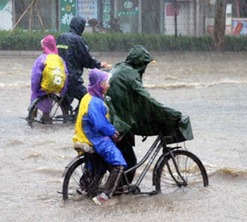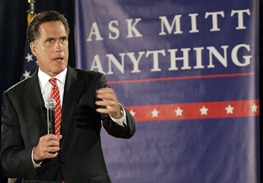 On this date in 1864, during the Civil War, my namesake, Union General William Tecumseh Sherman sent a message from Georgia to President Abraham Lincoln saying, "I beg to present you as a Christmas gift the city of Savannah."
On this date in 1864, during the Civil War, my namesake, Union General William Tecumseh Sherman sent a message from Georgia to President Abraham Lincoln saying, "I beg to present you as a Christmas gift the city of Savannah."
Saturday December 22, 2012
December 17, 2012
I agree with Rep. Keith Ellison’s recent assertions about gun control:
We should reinstate the Assault Weapons Ban, a law on the books until 2004 that prevented dangerous weapons from falling into the hands of violent criminals, and fully support implementation of the National Instant Criminal Background Check System to ensure dangerous individuals who are already barred by federal law from owning a gun cannot buy guns online or at gun shows. 
In my opinion, these are minimum changes and just the beginning of what needs to be done to stop gun violence in the United States. It’s shameful what we allow. Blood is on all outr hands.
December 13, 2012
As men age, they are more likely to pass genetic mutations on to their children. By introducing change, older men's genes appear to be a major driving force in human evolution. But the mutations from a growing number of older fathers may also account for a portion of the recent increase in autism. 
 In families that have only one autistic child, about 15 percent of the cases are linked to new mutations in sperm cells. Other studies suggest that offspring of older dads are at higher risk of schizophrenia, bipolar disorder, and epilepsy as well. Overall, advanced paternal age probably accounts for 5 percent to more than 25 percent of the risk for autism, depending on whom you ask. Because the average age of fatherhood is rising in many Western countries, more mutations are probably being passed along. Ultimately, older fathers are a double-edged sword. Most of the mutations they pass on are harmless and some are definitely beneficial, even essential to our long-term survival as a species, since a genetically varied population is the raw material of evolutionary change. So, though mutations can be dangerous for the next generation they also increase the diversity in our genome.
In families that have only one autistic child, about 15 percent of the cases are linked to new mutations in sperm cells. Other studies suggest that offspring of older dads are at higher risk of schizophrenia, bipolar disorder, and epilepsy as well. Overall, advanced paternal age probably accounts for 5 percent to more than 25 percent of the risk for autism, depending on whom you ask. Because the average age of fatherhood is rising in many Western countries, more mutations are probably being passed along. Ultimately, older fathers are a double-edged sword. Most of the mutations they pass on are harmless and some are definitely beneficial, even essential to our long-term survival as a species, since a genetically varied population is the raw material of evolutionary change. So, though mutations can be dangerous for the next generation they also increase the diversity in our genome.
December 4, 2012
According to Mercer's 2012 Quality of Living Index, Vienna, famous for its hundreds of museums, 2000 parks, and of course its roasted coffee, is the best place on the planet to live. This year's selection makes Vienna number one in the world for the fourth year in a row. The annual survey by the global human resources consulting firm points not just to Austria's qualities but to much of the region's virtues. Eight of the report's top 10 cities are in Europe. Zurich is the world's second most livable city while three German cities -- Munich, Dusseldorf, and Frankfurt -- follow close behind. Mercer's survey results are based on an analysis of local living conditions comprising 39 factors in 10 categories. Political considerations include government stability and crime rates. Economic factors take into account banking services and currency exchange laws. Health considerations include access to medical care and pollution levels. Transport, housing, and recreation are also taken into account. 
1. Vienna, Austria
2. Zurich, Switzerland
3. Auckland, New Zealand
4. Munich, Germany
5. Vancouver, Canada
6. Düsseldorf, Germany
7. Frankfurt, Germany
8. Geneva, Switzerland
9. Copenhagen, Denmark
10. Bern, Switzerland
10. (tie) Sydney, Australia
12. Amsterdam, Netherlands
13. Wellington, New Zealand
14. Ottawa, Canada
15. Toronto, Canada
16. Berlin, Germany
17. Hamburg, Germany
17. Melbourne, Australia
19. Luxembourg, Luxembourg
21. Perth, Australia
22. Brussels, Belgium
23. Montreal, Canada
24. Nuremberg, Germany
25. Singapore, Singapore
26. Canberra, Australia
27. Stuttgart, Germany
28. Honolulu, Hawaii U.S.
29. Adelaide, Australia
29. (tie) Paris, France
29. (tie) San Francisco, U.S.
City scores help multinational companies calculate compensation packages for the employees they send overseas. A lower score often correlates into a better compensation package that includes hardship allowances, according to Mercer. Countries with unstable governments or undergoing civil strife tend usually to have lower scores. Eight African cities dominate the bottom ten in this year's survey. Around the word and on a regional basis, the cities that score the lowest are:
64. Belfast, Northern Ireland (Western Europe)
71. Detroit, Michigan, (United States)
207. Dushanbe, Tajikistan (Asia-Pacific)
213. Tbilisi, Georgia (Eastern Europe)
219. Port-au-Prince, Haiti (North Americas)
This year's city with the worst quality of life is Baghdad, Iraq at #221. The United States, which constantly trumpets itself as “the greatest country in the world” couldn’t even break the top 25 with Honolulu slouching in at 28 and San Francisco tied for 29th.
Also, Transparency International has released its 2012 Corruption Perceptions Index, deeming more than two-thirds of the countries surveyed as "very corrupt."  The usual suspects occupied both ends of the league table. Only 53 of 176 countries surveyed attained a "passing grade" of 50 out of 100 in the annual report. Two typical trios bookended the index, with Denmark, Finland, and New Zealand all tied at 90 at the top. Somalia, North Korea, and Afghanistan shared the ignominious end of Transparency's table, scoring just eight. As a geographic region, Scandinavia swept the board as usual. Sweden was fourth in line after joint leaders Denmark and Finland, with Norway bagging seventh spot with a score of 85. Weak civil society and rule of law can blight lives, particularly for those who most need the protection of the state. The comprehensive new report reveals wide disparities, with parts of Asia faring quite poorly. Transparency's Managing Director Cobus de Swardt said the world's top economies should "lead by example" and ensure "their institutions are fully transparent and their leaders are held accountable." But, the world's largest economy, the US, could only manage a score of 73 - 19th in the standings, between the UK and Chile. China, meanwhile, logged only 39 points, scraping into the top half in 80th place.
The usual suspects occupied both ends of the league table. Only 53 of 176 countries surveyed attained a "passing grade" of 50 out of 100 in the annual report. Two typical trios bookended the index, with Denmark, Finland, and New Zealand all tied at 90 at the top. Somalia, North Korea, and Afghanistan shared the ignominious end of Transparency's table, scoring just eight. As a geographic region, Scandinavia swept the board as usual. Sweden was fourth in line after joint leaders Denmark and Finland, with Norway bagging seventh spot with a score of 85. Weak civil society and rule of law can blight lives, particularly for those who most need the protection of the state. The comprehensive new report reveals wide disparities, with parts of Asia faring quite poorly. Transparency's Managing Director Cobus de Swardt said the world's top economies should "lead by example" and ensure "their institutions are fully transparent and their leaders are held accountable." But, the world's largest economy, the US, could only manage a score of 73 - 19th in the standings, between the UK and Chile. China, meanwhile, logged only 39 points, scraping into the top half in 80th place.
November 11, 2012
Two weak tornadoes touched down in the south metro late Saturday - an extremely rare phenomenon that Minnesota has not experienced this late in the season since the National Weather Service began keeping tornado statistics. After a day of record-breaking highs that topped out in the lower 70s in some parts of the Twin Cities, a strong cold front rode in from the Dakotas, spawning the tornadoes in Dakota County around 11 p.m. Saturday. They fanned into straight-line winds that ripped out trees, knocked out power, and caused light structural damage in Dakota, Ramsey, and southern Washington counties. The first tornado showed up on radar at 10:58 p.m., touching down near McAndrews Road and County Road 5 in Burnsville. It moved northeast. Wind speeds were estimated at 80 miles per hour. It then widened into straight-line winds. 
Seven minutes later, a line of thunderstorms moving fast to the northeast produced a second tornado following the Mississippi River, and it dropped down near the intersection of Interstate 494 and Hwy. 13. That one had wind speeds of 70 to 75 mph. The winds had picked up intensity as they swept from the west into the east metro, with pockets of homes and businesses hardest hit, and power failures in West St. Paul and Mendota Heights. The straight-line winds were nearly as strong as the tornadoes, wreaking nearly as much damage and over wider swaths. Wind damage was reported as far north as White Bear Lake. No injuries were reported, but trees and power lines were blown down. Power was lost to about 12,000 homes and businesses. The twisters were rated as EF-0, on a scale that rates the most devastating tornadoes as EF-5. But even a weak tornado can still do damage. Any tornado in a metro area can be dangerous with so many people. The November twisters are not only rare in Minnesota, but are extremely rare for other places in the Northern Plains, the Upper Mississippi River Valley which includes Wisconsin, Iowa, and North and South Dakota. The tornadoes came four to six weeks later than the typical time that twisters end in Minnesota. As the cover of the November 5 issue of Bloomberg Businessweek said, It’s Global Warming, Stupid.
November 7, 2012
The United States no longer makes the list of the 10 most prosperous countries in the world, according to a new study by the Legatum Institute. The Legatum Prosperity Index found that while prosperity increased globally, the U.S. fell to 12th place in its rankings. The report writes:  The American Dream is in jeopardy. In an unprecedented fall, America drops to twelfth position in the worldwide prosperity rankings – with weakening performance across five of the Index’s eight sub-categories. The Legatum Institute published its first Prosperity Index six years ago, ranking countries based on material wealth and personal well-being. The 2012 index analyzed 142 countries in eight categories: economy, education, entrepreneurship & opportunity, governance, health, personal freedom, safety & security, and social capital. According to the study, overall prosperity in Europe has increased despite the economic crisis, though several European countries have seen their scores drop in categories analyzing economic development. This study comes on the tails of the U.N.'s list of the most prosperous cities in the world -- with more than half of them located in Europe. It’s about time all those American exceptionalists stop the continuous bluster about “greatest country in the world.”
The American Dream is in jeopardy. In an unprecedented fall, America drops to twelfth position in the worldwide prosperity rankings – with weakening performance across five of the Index’s eight sub-categories. The Legatum Institute published its first Prosperity Index six years ago, ranking countries based on material wealth and personal well-being. The 2012 index analyzed 142 countries in eight categories: economy, education, entrepreneurship & opportunity, governance, health, personal freedom, safety & security, and social capital. According to the study, overall prosperity in Europe has increased despite the economic crisis, though several European countries have seen their scores drop in categories analyzing economic development. This study comes on the tails of the U.N.'s list of the most prosperous cities in the world -- with more than half of them located in Europe. It’s about time all those American exceptionalists stop the continuous bluster about “greatest country in the world.”
November 6, 2012
Yes!
Except for Michele Bachman slithering by, it was a great night:
Both constitutional amendments, one to state that marriage is only between a man and a woman, and another to require voter ID, failed. Very proud to be a Minnesotan today, especially having been away in nothing land for nearly 3 years.
July 31, 2012
Even with a persistent gender gap in a presidential election year, House Republicans have not given up on their campaign to narrow access to birth control, abortion care, and lifesaving cancer screenings. Far from it. A new Republican spending proposal revives some of the more extreme attacks on women’s health and freedom that were blocked by the Senate earlier in this Congress. The resurrection is part of an alarming national crusade that goes beyond abortion rights and strikes broadly at women’s health in general. These setbacks are recycled from the Congressional trash bin in the fiscal 2013 spending bill for federal health, labor and education programs approved by a House appropriations subcommittee on July 18 over loud objections from Democratic members to these and other provisions. The measure would bar Planned Parenthood’s network of clinics, which serve millions of women across the country, from receiving any federal money unless the health group agreed to no longer offer abortion services for which it uses no federal dollars — a patently unconstitutional provision. It would also eliminate financing for Title X, the effective federal family-planning program for low-income women that provides birth control, breast and cervical cancer screenings, and testing for sexually-transmitted diseases.  Without this program, some women would die, and unintended pregnancies would rise, resulting in some 400,000 more abortions a year and increases in Medicaid-related costs, according to the Guttmacher Institute, a leading authority on reproductive health. On top of that, the bill would prevent implementation of most of the Affordable Care Act, wiping out its numerous advances for women’s health. It would seriously weaken the requirement that employee insurance plans cover birth control and other preventive health services by allowing any employer to opt out based on personal religious beliefs or moral objections. Pushed by the subcommittee’s chairman, Denny Rehberg, a Montana Republican, the budget plan stands little chance of being passed in its current form. Congress is about to leave on its August break, and, without explanation, the full Appropriations Committee’s consideration of the bill has been postponed indefinitely. It may be that Speaker John Boehner wants to avoid a controversy heading toward November that shifts focus from the economy. Even so, the subcommittee’s anti-woman work product is a statement of Republican policy. It is endorsed by the full committee chairman, Harold Rogers, and will be a starting point for negotiations on a budget deal with the Senate. Furthermore, when Congress puts forth bad ideas to curtail birth control and abortion access, they tend to spread, helping to inspire copycat bills in the states. Since House Republicans first tried to defund Planned Parenthood, for example, similar attacks have been enacted in six states, most recently in North Carolina earlier this month. There is a striking overlap between the subcommittee’s regressive politics and the polices espoused by the presumptive Republican presidential nominee, Mitt Romney. That makes it a window on what a Romney presidency could mean for women’s rights and lives.
Without this program, some women would die, and unintended pregnancies would rise, resulting in some 400,000 more abortions a year and increases in Medicaid-related costs, according to the Guttmacher Institute, a leading authority on reproductive health. On top of that, the bill would prevent implementation of most of the Affordable Care Act, wiping out its numerous advances for women’s health. It would seriously weaken the requirement that employee insurance plans cover birth control and other preventive health services by allowing any employer to opt out based on personal religious beliefs or moral objections. Pushed by the subcommittee’s chairman, Denny Rehberg, a Montana Republican, the budget plan stands little chance of being passed in its current form. Congress is about to leave on its August break, and, without explanation, the full Appropriations Committee’s consideration of the bill has been postponed indefinitely. It may be that Speaker John Boehner wants to avoid a controversy heading toward November that shifts focus from the economy. Even so, the subcommittee’s anti-woman work product is a statement of Republican policy. It is endorsed by the full committee chairman, Harold Rogers, and will be a starting point for negotiations on a budget deal with the Senate. Furthermore, when Congress puts forth bad ideas to curtail birth control and abortion access, they tend to spread, helping to inspire copycat bills in the states. Since House Republicans first tried to defund Planned Parenthood, for example, similar attacks have been enacted in six states, most recently in North Carolina earlier this month. There is a striking overlap between the subcommittee’s regressive politics and the polices espoused by the presumptive Republican presidential nominee, Mitt Romney. That makes it a window on what a Romney presidency could mean for women’s rights and lives.
July 30, 2012
Unsettling data about IQ and Gender according to Dr. Paul Irwing a senior lecturer in organizational psychology at Manchester University. “All the research I've done points to a gender difference in general cognitive ability. There is a mean difference of about five IQ points. The further you go up the distribution the more and more skewed it becomes. There are twice as many men with an IQ of 120-plus as there are women, there are 30 times the number of men with an IQ of 170-plus as there are women. I don't know why this is, all I can say is that we have a huge amount of data. In my 2005 paper in the British Journal of Psychology we looked at 22 surveys sampling 20,000 university students. In 21 out of the 22 studies males always had an advantage. That's a lot. We ignored the survey from Mexico because the results were consistent with a university that was extremely selective with respect to females.  The results of both studies were a shock to me. I find prejudice abhorrent. I've always taught sex differences from a left-wing point of view, that women are every bit as good as men. My findings don't fit my view of the world at all. Girls often do better than boys at school. There has to be some female compensating factor, most importantly the ability to process speech sounds, which means women read faster and more accurately and have an advantage in basic writing tasks. And women work harder than men and are more conscientious so they do things technically correctly. Men are often quite original but deficient in what is technically demanded. Historically women have been discriminated against. They've made tremendous progress and some people feel findings like this are a kick in the teeth. I have sympathy for that, but only people who know virtually nothing about IQ tests claim they have a cultural bias. All IQ tests are thoroughly tested and adjusted for bias, so if anything IQ tests are biased in favour of women not men. People should have equal opportunities but if you want a society where everyone feels satisfied you're not going to find men and women doing the same things in the same proportions. It would help if we recognised that.” The picture is of Marissa Mayer, newly appointed CEO of Yahoo.
The results of both studies were a shock to me. I find prejudice abhorrent. I've always taught sex differences from a left-wing point of view, that women are every bit as good as men. My findings don't fit my view of the world at all. Girls often do better than boys at school. There has to be some female compensating factor, most importantly the ability to process speech sounds, which means women read faster and more accurately and have an advantage in basic writing tasks. And women work harder than men and are more conscientious so they do things technically correctly. Men are often quite original but deficient in what is technically demanded. Historically women have been discriminated against. They've made tremendous progress and some people feel findings like this are a kick in the teeth. I have sympathy for that, but only people who know virtually nothing about IQ tests claim they have a cultural bias. All IQ tests are thoroughly tested and adjusted for bias, so if anything IQ tests are biased in favour of women not men. People should have equal opportunities but if you want a society where everyone feels satisfied you're not going to find men and women doing the same things in the same proportions. It would help if we recognised that.” The picture is of Marissa Mayer, newly appointed CEO of Yahoo.
July 28, 2012
Having just recovered from 5 surgeries for sunburn-related skin cancer, I found this information very useful, if also a bit late: Only 25% of 800 tested sunscreens are effective at protecting your skin without the use of potentially harmful ingredients, according to the 2012 Sunscreen Guide released by the Environmental Working Group. The Environmental Working Group says 56% of beach and sport sunscreens contain the chemical oxybenzone. The primary function of oxybenzone is to absorb ultraviolet light, but some research shows oxybenzone can be absorbed through the skin. 
July 27, 2012
There had been a 17-fold increase in computer attacks on American infrastructure between 2009 and 2011, initiated by criminal gangs, hackers, and other nations. The assessment by the head of the National Security Agency and United States Cyber Command, appears to be the government’s first official acknowledgment of the pace at which America’s electricity grids, water supplies, computer and cellphone networks, and other infrastructure are coming under attack. 
July 23, 2012
The Price of Offshore Revisited, a study commissioned by the Tax Justice Network, claims that a global super-rich elite had at least $21 trillion hidden in secret tax havens by the end of 2010. That figure is equivalent to the size of the US and Japanese economies combined. The author of the study claims that $21tn is actually a conservative figure and the true scale could be $32tn. The report uses data from the Bank of International Settlements, International Monetary Fund, World Bank, and national governments.  It deals only with financial wealth deposited in bank and investment accounts, and not other assets such as property and yachts. At the end of 2010, the 50 leading private banks alone collectively managed more than $12.1tn in cross-border invested assets for private clients. The three private banks handling the most assets offshore are UBS, Credit Suisse, and Goldman Sachs. The report says that the super-rich move money around the globe through an "industrious bevy of professional enablers in private banking, legal, accounting, and investment industries.” So, less than 100,000 people worldwide own about $9.8tn of this untaxable wealth, including the presumptive Republican presidential nominee.
It deals only with financial wealth deposited in bank and investment accounts, and not other assets such as property and yachts. At the end of 2010, the 50 leading private banks alone collectively managed more than $12.1tn in cross-border invested assets for private clients. The three private banks handling the most assets offshore are UBS, Credit Suisse, and Goldman Sachs. The report says that the super-rich move money around the globe through an "industrious bevy of professional enablers in private banking, legal, accounting, and investment industries.” So, less than 100,000 people worldwide own about $9.8tn of this untaxable wealth, including the presumptive Republican presidential nominee.
July 20, 2012
Western governments, including the United States, appear to be stepping up efforts to censor Internet search results and YouTube videos, according to a "transparency report" released by Google. Google received 187 requests from United States law enforcement agencies and courts to remove content from its Web properties from July to December 2011, up 103% from the 92 requests it received in the previous reporting period. In one incident cited in the report, a U.S. law enforcement agency asked Google to take down a blog that "allegedly defamed a law enforcement official in a personal capacity."  The company did not comply with that request. In another, a separate law enforcement group asked Google to take down 1,400 YouTube videos because of "alleged harassment." And in Canada, the passport office asked Google to delete a YouTube video "of a Canadian citizen urinating on his passport and flushing it down the toilet," according to the report. The tech company did not oblige either of those requests but did comply at least in part with 42% of the removal requests from the United States in the last half of 2011, the report says. That number is down considerably compared to previous reports; In the latter half of 2010, for example, Google said it complied with 87% of U.S. requests to remove content. In the last half of 2011, U.S. agencies asked Google to remove 6,192 individual pieces of content from its search results, blog posts or archives of online videos, according to the report. That's up 718% compared with the 757 such items that U.S. agencies asked Google to remove in the six months prior. The biannual transparency report also indicates a rise in world governments' requests to take a look at the data Google collects about its users. And with those requests, Google tended to be much more likely to comply.
The company did not comply with that request. In another, a separate law enforcement group asked Google to take down 1,400 YouTube videos because of "alleged harassment." And in Canada, the passport office asked Google to delete a YouTube video "of a Canadian citizen urinating on his passport and flushing it down the toilet," according to the report. The tech company did not oblige either of those requests but did comply at least in part with 42% of the removal requests from the United States in the last half of 2011, the report says. That number is down considerably compared to previous reports; In the latter half of 2010, for example, Google said it complied with 87% of U.S. requests to remove content. In the last half of 2011, U.S. agencies asked Google to remove 6,192 individual pieces of content from its search results, blog posts or archives of online videos, according to the report. That's up 718% compared with the 757 such items that U.S. agencies asked Google to remove in the six months prior. The biannual transparency report also indicates a rise in world governments' requests to take a look at the data Google collects about its users. And with those requests, Google tended to be much more likely to comply.
July 16, 2012
With the implementation of the latest Internet Protocol (IP) standard called IPv6, the Internet grew from 4.3 billion unique addresses to 340 undecillion (340 trillion trillion trillion), a growth factor of 79 octillion (billion billion billion). IP is a global communications standard used for linking connected devices together.  Every networked device -- a PC, smartphone, laptop, tablet, etc. -- needs a unique IP address. With IPv6, there are now enough IP combinations for everyone in the world to have a billion billion IP addresses for every second of their life. The previous IP standard, IPv4, had this structure: xxx.xxx.xxx.xxx, with each "xxx" able to go from 0 to 255. IPv6 expands that so each "x" can be a 0 through 9 or "a" through "f," and it's structured like this: xxxx:xxxx:xxxx:xxxx:xxxx:xxxx:xxxx:xxxx. That expansion is necessary because Cisco predicts that by 2016 there will be three networked devices per person on earth. I myself already have three, and I’m planning to get more.
Every networked device -- a PC, smartphone, laptop, tablet, etc. -- needs a unique IP address. With IPv6, there are now enough IP combinations for everyone in the world to have a billion billion IP addresses for every second of their life. The previous IP standard, IPv4, had this structure: xxx.xxx.xxx.xxx, with each "xxx" able to go from 0 to 255. IPv6 expands that so each "x" can be a 0 through 9 or "a" through "f," and it's structured like this: xxxx:xxxx:xxxx:xxxx:xxxx:xxxx:xxxx:xxxx. That expansion is necessary because Cisco predicts that by 2016 there will be three networked devices per person on earth. I myself already have three, and I’m planning to get more.
July 12, 2012
According to a new study in the New England Journal of Medicine Drinking a daily cup of coffee -- or even several cups -- isn't likely to harm your health, and it may even lower your risk of dying from chronic diseases such as diabetes and heart disease. The new study is by far the largest of its kind to date. As part of a joint project with the AARP, researchers from the National Institutes of Health followed more than 400,000 healthy men and women between the ages of 50 and 71 for up to 13 years, during which 13% of the participants died.  Overall, coffee drinkers were less likely than their peers to die during the study, and the more coffee they drank, the lower their mortality risk tended to be. Compared with people who drank no coffee at all, men and women who drank six or more cups per day were 10% and 15% less likely, respectively, to die during the study. This pattern held when the researchers broke out the data by specific causes of death, including heart disease, lung disease, pneumonia, stroke, diabetes, infections, and even injuries and accidents. Cancer was the only major cause of death not associated with coffee consumption. Even moderate coffee consumption was linked to better survival odds. Drinking a single cup per day -- which was much more common than a six-cup-a-day habit -- was associated with a 6% lower risk of dying among men and a 5% lower risk among women. In the study, both regular and decaf were associated with a lower risk of dying, which suggests that these and other substances in coffee might be more important than caffeine. But even decaf contains trace amounts of caffeine, so the authors can't entirely rule out the possibility that caffeine has an effect on health. Who then would counsel people that coffee is evil?
Overall, coffee drinkers were less likely than their peers to die during the study, and the more coffee they drank, the lower their mortality risk tended to be. Compared with people who drank no coffee at all, men and women who drank six or more cups per day were 10% and 15% less likely, respectively, to die during the study. This pattern held when the researchers broke out the data by specific causes of death, including heart disease, lung disease, pneumonia, stroke, diabetes, infections, and even injuries and accidents. Cancer was the only major cause of death not associated with coffee consumption. Even moderate coffee consumption was linked to better survival odds. Drinking a single cup per day -- which was much more common than a six-cup-a-day habit -- was associated with a 6% lower risk of dying among men and a 5% lower risk among women. In the study, both regular and decaf were associated with a lower risk of dying, which suggests that these and other substances in coffee might be more important than caffeine. But even decaf contains trace amounts of caffeine, so the authors can't entirely rule out the possibility that caffeine has an effect on health. Who then would counsel people that coffee is evil?
July 4, 2012
Bill Moyers on July 4th : Here comes the Fourth of July, number 236 since the Continental Congress approved the Declaration of Independence and riders on horseback rushed it to the far corners of the thirteen new United States -- where it was read aloud to cheering crowds. These days our celebration of the Fourth brings a welcome round of barbecue, camaraderie with friends and family, fireworks, flags, and unbeatable prices at the mall. But perhaps, too, we will remember the Declaration of Independence itself, the product of what John Adams called Thomas Jefferson's "happy talent for composition." Take some time this week to read it alone, to yourself, or aloud with others, and tell me the words aren't still capable of setting the mind ablaze. The founders surely knew that when they let these ideas loose in the world, they could never again be caged. Yet from the beginning, these sentiments were also a thorn in our side, a reminder of the new nation's divided soul. Opponents, who still sided with Britain, greeted it with sarcasm. How can you declare "All men are created equal," without freeing your slaves? Jefferson himself was an aristocrat whose inheritance of 5,000 acres, and the slaves to work it, mocked his eloquent notion of equality. He acknowledged that slavery degraded master and slave alike, but would not give his own slaves their freedom.  Their labor kept him financially afloat. Hundreds of slaves, forced like beasts of burden to toil from sunrise to sunset under threat of the lash, enabled him to thrive as a privileged gentleman, to pursue his intellectual interests, and to rise in politics. Even the children born to him by the slave Sally Hemings remained slaves, as did their mother. Only an obscure provision in his will released his children after his death. All the others -- scores of slaves -- were sold to pay off his debts. Yes, Thomas Jefferson possessed "a happy talent for composition," but he employed it for cross purposes. Whatever he was thinking when he wrote "all men are created equal," he also believed black people were inferior to white people. Inferior, he wrote, "to the whites in the endowments both of body and mind." To read his argument today is to enter the pathology of white superiority that attended the birth of our nation. So forcefully did he state the case, and so great was his standing among the slave-holding class, that after his death the black abolitionist David Walker would claim Jefferson's argument had "injured us more, and has been as great a barrier to our emancipation as any thing that has ever been advanced against us," for it had "... sunk deep into the hearts of millions of the whites, and never will be removed this side of eternity." So, the ideal of equality Jefferson proclaimed, he also betrayed. He got it right when he wrote about "Life, Liberty and the pursuit of Happiness" as the core of our human aspirations. But he lived it wrong, denying to others the rights he claimed for himself. And that's how Jefferson came to embody the oldest and longest war of all -- the war between the self and the truth, between what we know and how we live. So enjoy the fireworks and flags, the barbecues and bargain sales. But hold this thought as well: that behind this Fourth of July holiday are human beings who were as flawed and conflicted as they were inspired. If they were to look upon us today, they most likely would think as they did then, how much remains to be done.
Their labor kept him financially afloat. Hundreds of slaves, forced like beasts of burden to toil from sunrise to sunset under threat of the lash, enabled him to thrive as a privileged gentleman, to pursue his intellectual interests, and to rise in politics. Even the children born to him by the slave Sally Hemings remained slaves, as did their mother. Only an obscure provision in his will released his children after his death. All the others -- scores of slaves -- were sold to pay off his debts. Yes, Thomas Jefferson possessed "a happy talent for composition," but he employed it for cross purposes. Whatever he was thinking when he wrote "all men are created equal," he also believed black people were inferior to white people. Inferior, he wrote, "to the whites in the endowments both of body and mind." To read his argument today is to enter the pathology of white superiority that attended the birth of our nation. So forcefully did he state the case, and so great was his standing among the slave-holding class, that after his death the black abolitionist David Walker would claim Jefferson's argument had "injured us more, and has been as great a barrier to our emancipation as any thing that has ever been advanced against us," for it had "... sunk deep into the hearts of millions of the whites, and never will be removed this side of eternity." So, the ideal of equality Jefferson proclaimed, he also betrayed. He got it right when he wrote about "Life, Liberty and the pursuit of Happiness" as the core of our human aspirations. But he lived it wrong, denying to others the rights he claimed for himself. And that's how Jefferson came to embody the oldest and longest war of all -- the war between the self and the truth, between what we know and how we live. So enjoy the fireworks and flags, the barbecues and bargain sales. But hold this thought as well: that behind this Fourth of July holiday are human beings who were as flawed and conflicted as they were inspired. If they were to look upon us today, they most likely would think as they did then, how much remains to be done.
April 22, 2012
On April 17, 2012, the highly-respected Stockholm International Peace Research Institute (SIPRI) released its latest study of world military spending. World military spending reached a record $1,738 billion in 2011, an increase of $138 billion over the previous year. The United States accounted for 41 percent of that, or $711 billion. Why are military expenditures continuing to increase, indeed, why aren’t they substantially decreasing, given the governmental austerity measures of recent years? Amid the economic crisis that began in late 2008 (and which continues to the present day), most governments have been cutting back their spending dramatically on education, libraries, healthcare, housing, parks, and other vital social services.  There have been no corresponding cuts in military budgets. In fact, this past year, nations spent more money on the military than at any time in human history. In the good ol’ USofA, House Republicans have been trying to wriggle out of the agreement they made in August that will force deep cuts in military spending. Now we know how they propose to do it: They will take tens of billions out of programs for the poorest Americans, particularly food stamps, along with health care for the middle class. The House Agriculture Committee voted on Wednesday to cut $33 billion over the next decade out of food stamps. That would immediately end benefits for two million people, and reduce benefits for the remaining 44 million people who use the program. A family of four would find their benefits lowered by $57 a month beginning in September, according to an analysis by the Center on Budget and Policy Priorities. The committee trimmed job training for food-stamp recipients by 72 percent; 280,000 students would no longer be eligible for free meals. The budget deal reached last August — the one Republicans triggered with their disastrous debt-ceiling crisis — calls for a painful sequester of $600 billion to both military and domestic spending over a decade.
There have been no corresponding cuts in military budgets. In fact, this past year, nations spent more money on the military than at any time in human history. In the good ol’ USofA, House Republicans have been trying to wriggle out of the agreement they made in August that will force deep cuts in military spending. Now we know how they propose to do it: They will take tens of billions out of programs for the poorest Americans, particularly food stamps, along with health care for the middle class. The House Agriculture Committee voted on Wednesday to cut $33 billion over the next decade out of food stamps. That would immediately end benefits for two million people, and reduce benefits for the remaining 44 million people who use the program. A family of four would find their benefits lowered by $57 a month beginning in September, according to an analysis by the Center on Budget and Policy Priorities. The committee trimmed job training for food-stamp recipients by 72 percent; 280,000 students would no longer be eligible for free meals. The budget deal reached last August — the one Republicans triggered with their disastrous debt-ceiling crisis — calls for a painful sequester of $600 billion to both military and domestic spending over a decade.  The Republicans could have accepted the military cuts they had agreed to or they could have joined with Democrats in reducing the cuts by raising taxes on the rich. Instead, the 2013 budget, written by Representative Paul Ryan of Wisconsin, put all the cuts on the domestic side. Representative Mike Conaway, a Texas Republican, explained that the Constitution requires Congress to pay for defense but that food stamps and other domestic programs were lower priorities. Agriculture was one of six committees ordered to find cuts to protect the military budget. The Ways and Means Committee has to cut $53 billion, and its members have already begun taking most of that money out of health care reform, starting with subsidies for insurance exchanges. The Financial Services Committee is planning to save $35 billion by eliminating the F.D.I.C.’s ability to take over failing banks, and hobbling the new Consumer Financial Protection Bureau with a $5.4 billion cut. The agriculture committee, told to find $33 billion in cuts, could have substantially reduced the farm subsidies that now amount to more than $15 billion a year. Instead, the entire amount is coming out of food stamps. Makes your heart swell with pride, doesn’t it.
The Republicans could have accepted the military cuts they had agreed to or they could have joined with Democrats in reducing the cuts by raising taxes on the rich. Instead, the 2013 budget, written by Representative Paul Ryan of Wisconsin, put all the cuts on the domestic side. Representative Mike Conaway, a Texas Republican, explained that the Constitution requires Congress to pay for defense but that food stamps and other domestic programs were lower priorities. Agriculture was one of six committees ordered to find cuts to protect the military budget. The Ways and Means Committee has to cut $53 billion, and its members have already begun taking most of that money out of health care reform, starting with subsidies for insurance exchanges. The Financial Services Committee is planning to save $35 billion by eliminating the F.D.I.C.’s ability to take over failing banks, and hobbling the new Consumer Financial Protection Bureau with a $5.4 billion cut. The agriculture committee, told to find $33 billion in cuts, could have substantially reduced the farm subsidies that now amount to more than $15 billion a year. Instead, the entire amount is coming out of food stamps. Makes your heart swell with pride, doesn’t it.
April 19, 2012
About 150 Afghan schoolgirls were poisoned after drinking contaminated water at a high school in the country's north, officials said, blaming it on conservative radicals opposed to female education. Since the 2001 toppling of the Taliban, which banned education for women and girls, females have returned to schools, especially in Kabul. But periodic attacks still occur against girls, teachers, and their school buildings. "We are 100 percent sure that the water they drank inside their classes was poisoned. 
April 17, 2012
Data released for Equal Pay Day show that wages for Utah women remain considerably lower than for men. Women in Utah are paid 69 cents for every dollar paid to men — amounting to a yearly gap of $14,446. And with nearly 85,500 Utah households led by women, the new data show that these gaps harm families and the state economy, according to a report by National Partnership for Women & Families. A woman working full time, year round receives $32,163 per year, while the median yearly pay for a man is $46,609.  Women are paid 69 cents for every dollar paid to men, amounting to a yearly gap of $14,446 between full-time working men and women. African American and Latina women working full time are paid 52 cents for every dollar paid to men, a difference of more than $22,200 per year. Women working full time, year round are paid 77 cents for every dollar paid to all men. African American women are paid 62 cents and Latinas are paid 54 cents for every dollar paid to white, non-Hispanic men. The analysis ranks Utah 48th among the 50 states in gender-based wage gap. Only Louisiana, ranked 49th, and Wyoming, 50th, fare worse. The gap in earnings for Utah women isn’t all that surprising, considering their poor college graduation rates according to the Utah Department of Workforce Services. Utah has the worst disparity in the nation between men and women earning bachelor’s degrees or higher — a difference of 6 percentage points. The Utah education gap more than doubles that of the next closest state, Idaho, at 2.4 percentage points, while the national average is 0.6 points. Yes, the Patriarchal Order still thrives in Utah.
Women are paid 69 cents for every dollar paid to men, amounting to a yearly gap of $14,446 between full-time working men and women. African American and Latina women working full time are paid 52 cents for every dollar paid to men, a difference of more than $22,200 per year. Women working full time, year round are paid 77 cents for every dollar paid to all men. African American women are paid 62 cents and Latinas are paid 54 cents for every dollar paid to white, non-Hispanic men. The analysis ranks Utah 48th among the 50 states in gender-based wage gap. Only Louisiana, ranked 49th, and Wyoming, 50th, fare worse. The gap in earnings for Utah women isn’t all that surprising, considering their poor college graduation rates according to the Utah Department of Workforce Services. Utah has the worst disparity in the nation between men and women earning bachelor’s degrees or higher — a difference of 6 percentage points. The Utah education gap more than doubles that of the next closest state, Idaho, at 2.4 percentage points, while the national average is 0.6 points. Yes, the Patriarchal Order still thrives in Utah.
April 14, 2012
New analyses of capital punishment show gross injustice in its application and enormous costs in continuing to impose it. In Connecticut, a powerful, comprehensive study provided evidence that state death sentences are haphazardly meted out, with virtually no connection to the heinousness of the crime. Decades of research show that racial bias pervades death penalty cases. Minority defendants with white victims are much more likely to be sentenced to death than others; 35 percent of those executed nationally since 1976 were black, though blacks currently make up 12.6 percent of the population. The problem of inadequate counsel permeates the system, with many indigent defendants sentenced to death after major blunders by court-assigned lawyers. And a horrific number of innocent people have ended up on death row: 17 convicts with death sentences have been exonerated with DNA evidence since 1993, 123 with other evidence since 1973. Any careful evaluation leads to what the American Law Institute concluded after a review of decades of executions: the system cannot be fixed. It is practically impossible to rid the legal process of biases driven by race, class, and politics. Not to mention that it is immoral for a nation to kill its own people. Capital punishment, by overwhelming evidence, should be abolished throughout the United States.
35 percent of those executed nationally since 1976 were black, though blacks currently make up 12.6 percent of the population. The problem of inadequate counsel permeates the system, with many indigent defendants sentenced to death after major blunders by court-assigned lawyers. And a horrific number of innocent people have ended up on death row: 17 convicts with death sentences have been exonerated with DNA evidence since 1993, 123 with other evidence since 1973. Any careful evaluation leads to what the American Law Institute concluded after a review of decades of executions: the system cannot be fixed. It is practically impossible to rid the legal process of biases driven by race, class, and politics. Not to mention that it is immoral for a nation to kill its own people. Capital punishment, by overwhelming evidence, should be abolished throughout the United States.
April 10, 2012
When it comes to “reforming the global financial system”, regulators have focused on banks. Weakened by the 2008 crisis, destabilised by the eurozone sovereign debt mess, and then hit with higher capital requirements, traditional lenders are on the retreat. Meanwhile, the "shadow banking" system, a phrase used to encompass a broad range of institutions and mechanisms, from hedge funds to "repo" markets, has recovered more rapidly and is poised to usurp banks in a variety of ways. Regulators are now grappling with how to deal with a vast sector that has little or no supervision. Shadow banking was a fundamental cause of the banking crisis; it is not a separate phenomenon from banking but a deeply related one. 
April 8, 2012
Letters written by George Washington, Henry David Thoreau’s pencil-drawn map of Walden Pond, and Mark Twain’s manuscript of “A Connecticut Yankee in King Arthur’s Court” are among the items from the New York Public Library’s American collections that will soon be digitized and made available to the public online. The library, aided by a $500,000 grant from the Polonsky Foundation, 
April 5, 2012
According to NOAA, March 2012 will go down as the warmest March in the United States since record-keeping began in 1895. In addition, the three-month period of January, February, and March was the warmest first quarter ever recorded in the Lower 48 states.
April 3, 2012
There’s good news and bad news. As befits my always sunny worldview, we’ll do the good news first. According to new research from the Pew Internet and American Life Project, about one-fifth of U.S. adults have read an e-book in the past year. And if you expand that to include Americans over 16 who have used an e-reader device or app to read news articles or magazine-style features, the figure is 43%. E-book users tend to read more often than people who read only print material, Pew found. In particular, they read more books. A typical e-book user read 24 books in the past year, compared with the 15 books reported by typical non-e-book users.  Also, a third of people who read e-content say they now spend more time reading than they did before e-books. This is especially true for people who own tablets and e-book readers. Currently 28% of Americans age 18 and older own at least one tablet or an e-book reader. And that's not even counting the people who read books on a Smartphone or iPod Touch app. For now, print reading material still rules the consumer market, however. Pew found that nearly three-fourths of U.S. adults read a printed book in 2011, and 11% listened to an audiobook. Print books are especially popular when people read to children. But, as common sense would dictate, print books are also the most popular choice when people want to borrow or lend a book, though the survey also found that just slightly more people prefer e-books over print for reading in bed. That’s the good news. On the flip side, Pew noted that nearly 20% of U.S. adults said they had not read a single book, electronic or print, in the past year. And that is indeed bad news.
Also, a third of people who read e-content say they now spend more time reading than they did before e-books. This is especially true for people who own tablets and e-book readers. Currently 28% of Americans age 18 and older own at least one tablet or an e-book reader. And that's not even counting the people who read books on a Smartphone or iPod Touch app. For now, print reading material still rules the consumer market, however. Pew found that nearly three-fourths of U.S. adults read a printed book in 2011, and 11% listened to an audiobook. Print books are especially popular when people read to children. But, as common sense would dictate, print books are also the most popular choice when people want to borrow or lend a book, though the survey also found that just slightly more people prefer e-books over print for reading in bed. That’s the good news. On the flip side, Pew noted that nearly 20% of U.S. adults said they had not read a single book, electronic or print, in the past year. And that is indeed bad news.
March 31, 2012
By the end of the decade, exaFLOP computers are predicted to go online. Those machines will perform at least 1,000 times faster than today's most powerful supercomputers. Supercomputer performance is measured in FLOPS, an acronym for FLoating Point Operations per Second. "Exa" is a metric prefix which stands for quintillion (or a billion billion). Exascale computers will perform approximately as many operations per second as 50 million laptops. Currently, the fastest supercomputers operate at the petaFLOP level, performing in excess of one quadrillion (or a million billion) operations per second. The first computer to break through the petaFLOP barrier was IBM's Roadrunner in 2008. But its reign as the fastest computer in the world didn't last long, with the Cray Jaguar installed at Oak Ridge National Laboratory 
March 28, 2012
The ideological nature of the health care case was obvious on the last day of oral argument. By the time the proceedings were over, much of what the conservative justices said in court seemed like part of a politically driven exercise — especially because the issues addressed on Wednesday were not largely constitutional in nature. In fact, they were the kinds of policy questions that are properly left to Congress and state governments to answer, not the Supreme Court. The court heard arguments on the issue of “severability” — the question of what should happen with the rest of the 2,700-page statute if the requirement that most Americans obtain health insurance is struck down. The insurance mandate was effectively reduced to a bumper sticker by the opponents in their constitutional challenge, and the entire law reduced to little more than an appendage to the mandate. “My approach would be to say that if you take the heart out of the statute, the statute’s gone,” Justice Antonin Scalia said,  a position held by the law’s opponents, who want to demolish the whole thing. But H. Bartow Farr III, the lawyer appointed by the court to argue for upholding all other parts of the law if the mandate falls, showed how careless and wrong that view is. His presentation compellingly explained what Congress actually passed: a thoughtfully constructed, comprehensive solution to the enormous problems of insufficient insurance coverage and ever-mounting costs of health care. As Mr. Farr made clear, the fate of the mandate should not determine the survival of the other elements of the law — like prohibiting insurers from denying coverage to people with pre-existing conditions or charging them higher fees — which can operate without the mandate. Under general principles, courts must avoid nullifying more of a law than is necessary. Justice Anthony Kennedy suggested that it would be more extreme to preserve part of the statute than to strike down the whole thing because that would alter Congress’s intent. He could avoid this problem by upholding the mandate. The last issue before the court was the law’s expansion of Medicaid, which will be financed mostly by federal funds. The challengers contend the expansion coerces them to cover more poor people and that the penalty for refusing to do so would be a cutoff of federal money. This is a bizarre view that treats Medicaid, a voluntary federal-state partnership, as an affront to state sovereignty. There is no legitimate constitutional question on this issue. It is disturbing that the conservative justices seriously entertained the opponents’ argument. But it does fit perfectly into the judicial activism of the right wing.
a position held by the law’s opponents, who want to demolish the whole thing. But H. Bartow Farr III, the lawyer appointed by the court to argue for upholding all other parts of the law if the mandate falls, showed how careless and wrong that view is. His presentation compellingly explained what Congress actually passed: a thoughtfully constructed, comprehensive solution to the enormous problems of insufficient insurance coverage and ever-mounting costs of health care. As Mr. Farr made clear, the fate of the mandate should not determine the survival of the other elements of the law — like prohibiting insurers from denying coverage to people with pre-existing conditions or charging them higher fees — which can operate without the mandate. Under general principles, courts must avoid nullifying more of a law than is necessary. Justice Anthony Kennedy suggested that it would be more extreme to preserve part of the statute than to strike down the whole thing because that would alter Congress’s intent. He could avoid this problem by upholding the mandate. The last issue before the court was the law’s expansion of Medicaid, which will be financed mostly by federal funds. The challengers contend the expansion coerces them to cover more poor people and that the penalty for refusing to do so would be a cutoff of federal money. This is a bizarre view that treats Medicaid, a voluntary federal-state partnership, as an affront to state sovereignty. There is no legitimate constitutional question on this issue. It is disturbing that the conservative justices seriously entertained the opponents’ argument. But it does fit perfectly into the judicial activism of the right wing.
March 26, 2012
New statistics show an ever-more-startling divergence between the fortunes of the wealthy and everybody else. Even in a country used to income inequality, these thefts are stunning. In 2010, as the nation continued to recover from the recession, a dizzying 93 percent of the additional income created in the country that year, compared to 2009 — $288 billion — went to the top 1 percent of taxpayers, those with at least $352,000 in income. That delivered an average single-year pay increase of 11.6 percent to each of these households. Still more astonishing was the  extent to which the super rich got rich faster than the merely rich. In 2010, 37 percent of these additional earnings went to just the top 0.01 percent, a teaspoon-size collection of about 15,000 households with average incomes of $23.8 million. These fortunate few saw their incomes rise by 21.5 percent. Meanwhile, the bottom 99 percent received a microscopic $80 increase in pay per person in 2010, after adjusting for inflation. The top 1 percent, whose average income is $1,019,089, had an 11.6 percent increase in income. And now, House Republicans just passed a budget that is an unbelievable mess of highly regressive tax cuts, large but unspecified reductions in discretionary spending (a category that importantly includes education, infrastructure, and research and development), and an evisceration of programs devoted to lifting those at the bottom, including unemployment insurance, food stamps, earned income tax credits, and many more. Obviously, policies of this sort would exacerbate the very problem of income inequality that most needs fixing. But that is clearly fundamental to their plan to turn the United States into a banana republic. God Bless America.
extent to which the super rich got rich faster than the merely rich. In 2010, 37 percent of these additional earnings went to just the top 0.01 percent, a teaspoon-size collection of about 15,000 households with average incomes of $23.8 million. These fortunate few saw their incomes rise by 21.5 percent. Meanwhile, the bottom 99 percent received a microscopic $80 increase in pay per person in 2010, after adjusting for inflation. The top 1 percent, whose average income is $1,019,089, had an 11.6 percent increase in income. And now, House Republicans just passed a budget that is an unbelievable mess of highly regressive tax cuts, large but unspecified reductions in discretionary spending (a category that importantly includes education, infrastructure, and research and development), and an evisceration of programs devoted to lifting those at the bottom, including unemployment insurance, food stamps, earned income tax credits, and many more. Obviously, policies of this sort would exacerbate the very problem of income inequality that most needs fixing. But that is clearly fundamental to their plan to turn the United States into a banana republic. God Bless America.
March 24, 2012
Intense rainfalls are getting bigger and more frequent, causing local governments, engineers and landowners to rethink whether sewer systems and other drainage features are up to their tasks. The storm water filtration pond near Cedar Lake in Minneapolis, for instance, needed to be cleaned out six years after it was built, instead of the 25 years designers expected. Researchers point directly at a warming climate as the cause. Warmer air holds more water vapor, and a longer storm season means intense storms can occur more frequently in what once were regarded as the off-seasons. As more northerly latitudes have warmed, the storm-producing clashes between warm and cold air masses have moved northward as well,  a key reason why the Upper Midwest has seen a steep increase in extreme precipitation. The Upper Midwest saw a 31 percent increase in "intense" rainfalls (the statistical 1 percent events) from 1958 to 2007, over previous decades, according to the National Climactic Data Center. That was the second-highest increase among eight U.S. regions, including Alaska and Hawaii. New England and the Northeast saw a 67 percent increase. Overall, intense doses of precipitation have become more frequent and more intense in recent decades than at any other time in the historical record and account for a larger percentage of total precipitation, according to a study by the U.S. Climate Change Science Program. Meanwhile, recent weather in Minnesota is hinting that a drought that has persisted for about seven months across much of the state (longer in the Arrowhead) might be loosening its grip. But those kinds of variations don't mean the longer-term trends of increases in intense rainfall might also reverse quickly; excessive rain has been overpowering drought trends in recent decades. At the same time, the classic climate warming scenario dictates that both excess rain and drought are likely simultaneously, as heat evaporates moisture from the land, then dumps it elsewhere in spotty, unpredictable, summer-storm patterns.
a key reason why the Upper Midwest has seen a steep increase in extreme precipitation. The Upper Midwest saw a 31 percent increase in "intense" rainfalls (the statistical 1 percent events) from 1958 to 2007, over previous decades, according to the National Climactic Data Center. That was the second-highest increase among eight U.S. regions, including Alaska and Hawaii. New England and the Northeast saw a 67 percent increase. Overall, intense doses of precipitation have become more frequent and more intense in recent decades than at any other time in the historical record and account for a larger percentage of total precipitation, according to a study by the U.S. Climate Change Science Program. Meanwhile, recent weather in Minnesota is hinting that a drought that has persisted for about seven months across much of the state (longer in the Arrowhead) might be loosening its grip. But those kinds of variations don't mean the longer-term trends of increases in intense rainfall might also reverse quickly; excessive rain has been overpowering drought trends in recent decades. At the same time, the classic climate warming scenario dictates that both excess rain and drought are likely simultaneously, as heat evaporates moisture from the land, then dumps it elsewhere in spotty, unpredictable, summer-storm patterns.
March 22, 2012
Today is World Water Day. The WWF has warned of an escalation in the global water crisis, saying that more than 50 violent conflicts have erupted around the world over water usage just since the turn of the century. WWF said demand for energy and food threatens to exacerbate the already simmering water crisis and would lead to more disputes. Leaders and environmental experts recently gathered in Marseilles for a week-long World Water Forum to discuss access to clean water, water rights, and the use of modern water-related technologies. Demand for water from agriculture, which already accounts for around 70 percent of the freshwater used globally, is expected to rise by at least 19 percent by 2050. A separate study published by the Organization for Economic Cooperation and Development (OECD) forecast that water demand would rise by 55 percent by 2050, with 40 percent of people likely to live in areas of potential water stress. Not only is there a growing crisis because of the lack of potable water, more than one million people die each year from consuming contaminated water.
Leaders and environmental experts recently gathered in Marseilles for a week-long World Water Forum to discuss access to clean water, water rights, and the use of modern water-related technologies. Demand for water from agriculture, which already accounts for around 70 percent of the freshwater used globally, is expected to rise by at least 19 percent by 2050. A separate study published by the Organization for Economic Cooperation and Development (OECD) forecast that water demand would rise by 55 percent by 2050, with 40 percent of people likely to live in areas of potential water stress. Not only is there a growing crisis because of the lack of potable water, more than one million people die each year from consuming contaminated water.
March 19, 2012
European researchers announced that they had again measured the speed of a subatomic particle that a September experiment suggested traveled faster than the speed of light. If it had, that would violate Einstein’s special theory of relativity, which underlies much of modern physics. Einstein’s theory of relativity says that nothing in the universe can travel faster than the speed of light in a vacuum, approximately 186,282 miles per second.  That speed factors into all kinds of calculations, from estimates about the size and age of the universe to the radius of black holes. The research team that tried to verify the earlier result found that the particles, neutrinos, do not in fact travel faster than light. The team, called Icarus, measured the speed of neutrinos fired from CERN to a detector 453 miles away in Italy. Opera was the team that reported in September that its tests appeared to show neutrinos speeding faster than light. Doubts about the Opera results were heightened last month when researchers said they had found a flaw in the technical setup that could have distorted the experiment’s figures. The Icarus team’s results came from a trial run for a longer experiment planned to take place in April or May. The Opera team, too, will repeat its experiment, this time with the technical glitches ironed out. So, Einstein is still right, at least for now.
That speed factors into all kinds of calculations, from estimates about the size and age of the universe to the radius of black holes. The research team that tried to verify the earlier result found that the particles, neutrinos, do not in fact travel faster than light. The team, called Icarus, measured the speed of neutrinos fired from CERN to a detector 453 miles away in Italy. Opera was the team that reported in September that its tests appeared to show neutrinos speeding faster than light. Doubts about the Opera results were heightened last month when researchers said they had found a flaw in the technical setup that could have distorted the experiment’s figures. The Icarus team’s results came from a trial run for a longer experiment planned to take place in April or May. The Opera team, too, will repeat its experiment, this time with the technical glitches ironed out. So, Einstein is still right, at least for now.
March 17, 2012
As the Chinese government moves ahead on a multibillion-dollar effort to blanket the country with surveillance cameras, one American company stands to profit: Bain Capital, the private equity firm founded by Mitt Romney. Chinese cities are installing surveillance systems with hundreds of thousands of cameras. In December, a Bain-run fund in which a Romney family blind trust has holdings purchased the video surveillance division of a Chinese company that claims to be the largest supplier to the government’s Safe Cities program, 
 Bain’s decision to enter China’s fast-growing surveillance industry raises questions about the direct role that American corporations play in outfitting authoritarian governments with technology that can be used to repress their own citizens. All the while, Romney has frequently called for a hard line against the Chinese government’s suppression of religious freedom and political dissent. And, as with previous deals involving American companies, Bain’s acquisition of Uniview violates the spirit, if not necessarily the letter, of American sanctions imposed on Beijing after the deadly crackdown on protests in Tiananmen Square. Those rules bar American corporations from exporting to China “crime-control” products like those that process fingerprints, make photo identification cards, or use night vision technology. While privately profiting from these semi-illegal exports, Mr. Romney publicly has accused the Obama administration of placing economic concerns above human rights in managing relations with China, and he has called on the White House to offer more vigorous support of those who criticize the Chinese Communist Party. Mitt, once again, hypocrisy is thy name.
Bain’s decision to enter China’s fast-growing surveillance industry raises questions about the direct role that American corporations play in outfitting authoritarian governments with technology that can be used to repress their own citizens. All the while, Romney has frequently called for a hard line against the Chinese government’s suppression of religious freedom and political dissent. And, as with previous deals involving American companies, Bain’s acquisition of Uniview violates the spirit, if not necessarily the letter, of American sanctions imposed on Beijing after the deadly crackdown on protests in Tiananmen Square. Those rules bar American corporations from exporting to China “crime-control” products like those that process fingerprints, make photo identification cards, or use night vision technology. While privately profiting from these semi-illegal exports, Mr. Romney publicly has accused the Obama administration of placing economic concerns above human rights in managing relations with China, and he has called on the White House to offer more vigorous support of those who criticize the Chinese Communist Party. Mitt, once again, hypocrisy is thy name.
March 16, 2012
After 244 years, the Encyclopedia Britannica is going out of print. The move is an acknowledgment of the realities of the digital age - and of competition from Wikipedia. Encyclopedia Britannica Inc., a company based in Chicago, will focus now on its online encyclopedias and curriculum for schools. 
March 8, 2012
The Republican-controlled Judiciary Committee in the House celebrated International Women’s Day by holding a hearing to promote a mean-spirited and constitutionally suspect bill called the Child Interstate Abortion Notification Act. It is both an attack on women’s rights and on the basic principles of federalism. Currently, thirty-two states have laws requiring teenagers to consult their parents or get their permission, or else seek a judge’s permission, before obtaining an abortion. The new bill would expand the reach of those restrictions by imposing a mandatory parental notification requirement and 24-hour waiting period on women under 18 who travel outside their home state to get the procedure.  Anyone who helps the minor in the absence of judicial authorization without first informing her parent or legal guardian — and that includes grandparents, older siblings, and clergy — would be subject to criminal and civil penalties that include up to a year in prison and a $100,000 fine. Under threat of criminal and civil penalties, doctors also would be forced to comply with a burdensome legal regimen involving the interaction of varying state laws and those of the provider’s home state. A similar measure is pending in the Senate. The bill not only isolates desperate young women, it increases the chances they will resort to unsafe alternatives for termination of their pregnancies or delay the procedure, making it more dangerous. In their zeal to force teenagers to bear children against their will, the measure’s sponsors included no exception to protect a teenager’s health. That is a clear violation of Supreme Court precedent, not to metion fundamental decency. It is also in keeping with the rest of the right-wing agenda on contraception and abortion. While claiming to want to get government off our backs, Republicans are trying to get it firmly jammed between women’s legs.
Anyone who helps the minor in the absence of judicial authorization without first informing her parent or legal guardian — and that includes grandparents, older siblings, and clergy — would be subject to criminal and civil penalties that include up to a year in prison and a $100,000 fine. Under threat of criminal and civil penalties, doctors also would be forced to comply with a burdensome legal regimen involving the interaction of varying state laws and those of the provider’s home state. A similar measure is pending in the Senate. The bill not only isolates desperate young women, it increases the chances they will resort to unsafe alternatives for termination of their pregnancies or delay the procedure, making it more dangerous. In their zeal to force teenagers to bear children against their will, the measure’s sponsors included no exception to protect a teenager’s health. That is a clear violation of Supreme Court precedent, not to metion fundamental decency. It is also in keeping with the rest of the right-wing agenda on contraception and abortion. While claiming to want to get government off our backs, Republicans are trying to get it firmly jammed between women’s legs.
March 1, 2012
Nearly half of the world's children are growing up in slums, and the numbers are only expected to increase as the world's cities continue growing, according to UNICEF’s State of the World's Children 2012 report. The agency projects the urban population of 7 billion to balloon to include two-thirds of the more than 9 billion people expected to live on earth by 2050. But the quality of life in towns and cities,  particularly in those of the developing and emerging countries, tends to be poor. Ever more families are moving into the world's cities, so already one in three children is growing up in a slum. In many of the world's slums up to 50 percent of children are malnourished and excluded from medical care and education, despite the fact that cities generally offer more schools, playgrounds, and hospitals than rural areas. The number of malnourished and undernourished children also is increasing. In India, 54 percent of the poorest children in slums are physically or mentally disabled because of inadequate nourishment. Unhygienic and cramped living conditions lead to more epidemics, tuberculosis, diarrhea, and pneumonia.
particularly in those of the developing and emerging countries, tends to be poor. Ever more families are moving into the world's cities, so already one in three children is growing up in a slum. In many of the world's slums up to 50 percent of children are malnourished and excluded from medical care and education, despite the fact that cities generally offer more schools, playgrounds, and hospitals than rural areas. The number of malnourished and undernourished children also is increasing. In India, 54 percent of the poorest children in slums are physically or mentally disabled because of inadequate nourishment. Unhygienic and cramped living conditions lead to more epidemics, tuberculosis, diarrhea, and pneumonia.
February 17, 2012
Education was historically considered the great equalizer in American society, capable of lifting less advantaged children and improving their chances for success as adults. It is the engine of a thriving democracy. A body of recently published scholarship suggests that the achievement gap between rich and poor children is widening, a development that threatens to dilute education’s leveling effects and American democracy. It is a well-known fact that children from affluent families tend to do better in school. Now, in analyses of long-term data published in recent months, researchers are finding that the gap between rich and poor students has grown substantially. A Stanford University study has found that the gap in standardized test scores between affluent and low-income students has grown by about 40 percent since the 1960s. In another study, by researchers from the University of Michigan, the imbalance between rich and poor children in college completion — the single most important predictor of success in the work force — has grown by about 50 percent since the late 1980s. The changes are tectonic, a result of social and economic processes unfolding over many decades. And, the data from most of these studies end in 2007 and 2008, before the recession’s full impact was felt. Researchers said that based on experiences during past recessions, the recent downturn was likely to have aggravated the trend. A study by researchers at the Center for Advanced Studies at the Juan March Institute in Madrid, scheduled to appear in the journal Demography, found that in 1972, Americans at the upper end of the income spectrum were spending five times as much per child as low-income families. By 2007 that gap had grown to nine to one; spending by upper-income families more than doubled, while spending by low-income families grew by only 20 percent. The gap is also growing in college. The University of Michigan study looked at two generations of students, those born from 1961 to 1964 and those born from 1979 to 1982. By 1989, about one-third of the high-income students in the first generation had finished college; by 2007, more than half of the second generation had done so. By contrast, only 9 percent of the low-income students in the second generation had completed college by 2007, up only slightly from a 5 percent college completion rate by the first generation in 1989. Greatest country in the world, right? Banana republic here we come.
— the single most important predictor of success in the work force — has grown by about 50 percent since the late 1980s. The changes are tectonic, a result of social and economic processes unfolding over many decades. And, the data from most of these studies end in 2007 and 2008, before the recession’s full impact was felt. Researchers said that based on experiences during past recessions, the recent downturn was likely to have aggravated the trend. A study by researchers at the Center for Advanced Studies at the Juan March Institute in Madrid, scheduled to appear in the journal Demography, found that in 1972, Americans at the upper end of the income spectrum were spending five times as much per child as low-income families. By 2007 that gap had grown to nine to one; spending by upper-income families more than doubled, while spending by low-income families grew by only 20 percent. The gap is also growing in college. The University of Michigan study looked at two generations of students, those born from 1961 to 1964 and those born from 1979 to 1982. By 1989, about one-third of the high-income students in the first generation had finished college; by 2007, more than half of the second generation had done so. By contrast, only 9 percent of the low-income students in the second generation had completed college by 2007, up only slightly from a 5 percent college completion rate by the first generation in 1989. Greatest country in the world, right? Banana republic here we come.
February 15, 2012
The top sources of air pollution are burning fossil fuels (such as gas, oil, and coal), and industrial emissions, both of which are prevalent in the Salt Lake Valley, a smog-rich environment. Fine particulate matter pollutants consist of microscopic particles of metal, carbon, sulfates, and other materials that result from these sources of pollution. These specks of dust are about 30 times smaller than the thickness of a human hair, so they can be inhaled deep into the lungs. Breathing fine particulate matter may harm the cardiovascular system in two ways: if particles find their way into the bloodstream they can make blood vessels less elastic, and they may also boost activity of the sympathetic nervous system, which tends to increase heart rate and blood pressure and trigger the release of stress hormones. 





